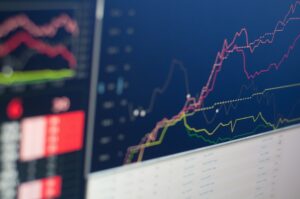Forex Smart Money: How to Identify and Follow Institutional Traders
Forex trading is a highly competitive and complex market, where millions of traders from around the world participate. Among these traders, institutional traders stand out as the major players who have the power to move the market. As individual retail traders, it is crucial to understand the strategies and tactics employed by institutional traders and learn how to identify and follow their moves. This article will provide an in-depth analysis of institutional traders and offer valuable insights on how to track their activities in the forex market.
Institutional traders, also known as smart money, include large banks, hedge funds, and other financial institutions. They possess significant financial resources, advanced trading technologies, and access to critical market information, giving them a distinct advantage over individual retail traders. Institutional traders are known for their ability to influence market trends and exploit trading opportunities effectively.
One of the key strategies employed by institutional traders is analyzing and interpreting market sentiment. These traders monitor various indicators and factors that impact market sentiment, such as economic data, geopolitical events, and central bank policies. By understanding the overall sentiment, institutional traders can anticipate potential market movements and adjust their trading strategies accordingly.
Retail traders can identify and follow institutional traders by paying attention to market trends and analyzing the volume of trades. Institutional traders often execute large orders, resulting in a significant increase in trading volume. By monitoring volume spikes, retail traders can identify potential areas of interest for institutional traders and align their positions accordingly.
Another effective way to track institutional traders is by analyzing the commitment of traders (COT) report. The COT report, released by regulatory authorities, provides a breakdown of the positions held by different market participants, including institutional traders. By analyzing the COT report, retail traders can gain insights into the positioning of institutional traders and adjust their trading strategies accordingly.
Furthermore, retail traders can utilize technical analysis tools to identify the footprints of institutional traders in the market. Institutional traders often leave behind distinctive patterns and signals that can be captured through technical analysis. Traders can use tools such as support and resistance levels, trend lines, and moving averages to identify potential areas of interest for institutional traders.
Additionally, monitoring news and announcements related to institutional traders can provide valuable insights for retail traders. Institutional traders often disclose their positions, strategies, and market views through press releases or interviews. By staying updated with such information, retail traders can align their positions with institutional traders and potentially profit from their moves.
Moreover, retail traders can consider following institutional traders through social trading platforms. These platforms allow traders to observe and replicate the trades of successful institutional traders. Through social trading, retail traders can monitor the activities of institutional traders in real-time and learn from their strategies and decision-making processes.
However, it is important to note that blindly following institutional traders can be risky. Institutional traders have access to significant resources and information, making it difficult for retail traders to replicate their success consistently. Therefore, it is crucial for retail traders to conduct their own analysis and research before making any trading decisions.
In conclusion, institutional traders play a significant role in the forex market and have the power to influence trends and exploit trading opportunities. By understanding their strategies and tactics, retail traders can identify and follow the moves of institutional traders. Monitoring market sentiment, analyzing trading volume, studying the COT report, utilizing technical analysis tools, staying updated with news, and considering social trading are effective methods for tracking institutional traders. However, it is essential for retail traders to conduct their own analysis and exercise caution when following institutional traders in order to minimize risks and maximize potential profits in the forex market.






